Benefits of bats
Bats are highly beneficial to people, and the advantages of having them around far outweigh any problems you might have with them. As predators of night-flying insects (including mosquitoes!), bats play a role in preserving the natural balance of your property or neighborhood. To learn more about creating habitat for bats and to certify your bat habitat, visit our Habitat at Home program.
Although swallows and other bird species consume large numbers of flying insects, they generally feed only in daylight. When night falls, bats take over: a nursing female little brown bat (Myotis lucifugus) may consume her body weight in insects each night during the summer.
Contrary to some widely held views, bats are not blind and do not become entangled in peoples' hair. If a flying bat comes close to your head, it's probably because it is hunting insects that have been attracted by your body heat. Less than one bat in 20,000 has rabies, and no Washington bats feed on blood.
Across the United States, bats face many threats that put them at severe risk of population decline. These threats include a devastating disease called white-nose syndrome, wind energy, habitat loss, and climate change. Creating and protecting habitat for bats where you live can be one small step to help support these important species.
What to do if you find a bat
- Do not touch the bat. Leave it in place unless advised to move it.
- If the bat must be moved, use thick gloves and a shovel or box to gently pick it up and move it to a protected and elevated location, like a tree. Most bat species have difficult time taking to flight from the ground.
- Remember - a small percentage of bats can carry rabies. If you have touched a bat or suspect exposure, contact your local Department of Health immediately.
- If you have a nuisance bat or colony that you need removed or excluded, please contact a Wildlife Control Operator in your area.
Report sick, injured, or dead bats online. Please also report groups of bats. These reports provide valuable information to track bat populations in Washington.
If you find a sick or injured bat, contact a wildlife rehabilitator.
Facts about Washington bats
Food and feeding behavior
- Washington bat species eat vast quantities of night-flying insects, including moths, beetles, mosquitoes, termites, and flies.
- Most bats hunt in flight or hang from a perch and wait for a passing insect to fly or walk within range.
- The pallid bat captures crickets, grasshoppers, spiders, scorpions, and other prey on trees or on the ground.
- Bats locate flying insects primarily by using a radar system known as echolocation. The bat emits high-pitched sound waves that bounce back to the bat when they strike a flying insect. A bat locates prey by interpreting the reflected sounds.
- Bats often capture insects when flying by scooping them into their tail or wing membranes, and then putting the insects into their mouth. This results in the erratic flight most people are familiar with when they observe bats feeding in the evening.
- Bats will fly 0.5 to 6 miles from their roost to a feeding site, using temporary roost sites there until returning to their main roost.

Hibernation sites
- To cope with winter conditions, most bats use a hibernation site, called a hibernaculum.
- Hibernation sites include cavities in large trees, caves, mine shafts, tunnels, old wells, and attics.
- The hibernaculum protects bats from predators, light, noise, and other disturbances. Temperatures in the hibernaculum must be cool enough to allow bats to maintain a low body temperature but not freeze; humidity must be high and constant enough to prevent bats from dehydrating.
- Bats hibernate alone or in groups, and enter hibernation sites in late September or October.
Nursery sites
- Most Washington bats breed during late fall or winter at their hibernaculum. Females store sperm until the following spring, when fertilization takes place after the females rouse from hibernation.
- Baby bats are called pups, and are raised in nursery colonies occupied only by breeding females and their young.
Bats in the winter
With few flying insects available to them during winter in Washington, bats survive by hibernating, migrating to regions where insects are available, or a combination of these strategies.
During hibernation, metabolic activities are greatly reduced—a bat's normal body temperature of around 100 degrees F is reduced to just one or two degrees higher than that of the hibernaculum, and their heart rate slows to only one beat every four or five seconds. A hibernating bat can thus survive on only a few grams of stored fat during the five- to six-month hibernation period.
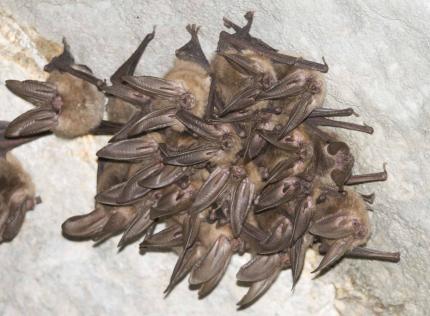
Banding studies indicate that little brown bats will migrate 120 miles between hibernacula and summer roosts, and, if undisturbed, they occupy the same site year after year. They select areas in the hibernaculum where there is high humidity (70–95%), and the temperature is 34 to 41 degrees F. Still, there are some species, such as the big brown bat, that can hibernate in relatively exposed situations in buildings where there is considerable fluctuation in temperature. Hibernation lasts until April or early May, but in coastal regions bats may arouse in late winter—little brown bats have been found feeding in the Puget Sound region in mid-March.
It is important not to disturb hibernating bats. If a bat rouses early from hibernation, it must use its fat reserves to increase its body temperature. A single disturbance probably costs a bat as much energy as it would normally expend in two to three weeks hibernating. Thus, if disturbed multiple times, hibernating bats may starve to death before spring.
It is important not to disturb roosting bats at any time of the year. In the spring, disturbing a maternity colony when flightless young are present may cause young bats to be dropped to their deaths, or abandoned, by panicked females. Because some bats hibernate in buildings during the winter months, bat proof a building only when you are sure no bats are hibernating in it. If bats are found hibernating inside after October 15, they should be left alone until early spring (prior to the birthing period in May) after the weather has warmed enough for insects to be out regularly. Meanwhile, seal all potential entry points into human living spaces, and develop a plan so the exclusion process can be accomplished effectively in spring.
Common bats of Washington
Fifteen species of bats can be found in Washington, from the common little brown bat (Myotis lucifugus) to the more rare Townsend's big-eared bat (Corynorhinus townsendii). Head to tail, bats range in length from the 2.5-inch-long canyon bat (Parastrellus hesperus), to the 6-inch-long hoary bat (Lasiurus cinereus). The hoary bat has a body approximately the size of a house sparrow and a wingspan of 17 inches.
The species most often seen flying around human habitat include the little brown bat (Myotis lucifugus, Fig. 1), Yuma myotis (Myotis yumanensis), big brown bat (Eptesicus fuscus), pallid bat (Antrozous pallidus), and California myotis (Myotis californicus).
Viewing and photographing bats
The safest way to view and enjoy bats is to watch them in action. Bats are fascinating flyers, zigging and zagging about as they chase and eat insects. Little brown bats and Yuma bats prefer to hunt over water. Big brown bats are often seen hunting along the margins of wooded areas, or silhouetted against the lighter sky as they twist and turn high above the tree canopy.
It's also fun to watch bats drink, which they usually do first thing after leaving their day roost. They scoop up mouthfuls of water with their lower jaws as they fly over lakes, streams, ponds, or water troughs. Most bats do not come out to eat or drink in heavy rain, inclement weather, and sustained freezing temperatures.
Tips for viewing bats
Choose a warm summer evening and a place where you can sit and view the place where bats will emerge from a roost site or have been spotted in the air.
When waiting for bats to emerge from a roost site, such as an attic or bat house, remain still and quiet, and listen for the squeaks or clicks that many species make before emerging.
Some species of bats begin their night flights 20 to 30 minutes before dark—the common big brown bat may be out foraging earlier. The rare canyon bat from the arid regions of Washington emerges before the sun goes down, and has been seen foraging with violet-green swallows. Other species don't emerge until after dark.
The best places to see bats in flight are where night-flying insects abound, such as next to a stream, lake, or pond, over a meadow or large lawn, along a forest edge, or around bright streetlights or porch lights.
With the aid of an inexpensive, commercial bat detector, listen for the echolocation calls bats make when navigating and locating prey.
Interested in photographing bats? The White-Nose Syndrome Response Team has put together guidance for effective bat photography. While the guidance is from a communications and outreach perspective, there are many helpful tips for everyone to safely and effectively photograph bats.
Bat houses
Some bat species prefer man-made structures, such as buildings and bat houses, to their natural roosts, whereas others are forced to roost in man-made structures when natural roosts, such as caves and hollow trees, are destroyed. Two bat species that frequently use bat houses are the little brown bat and the big brown bat.
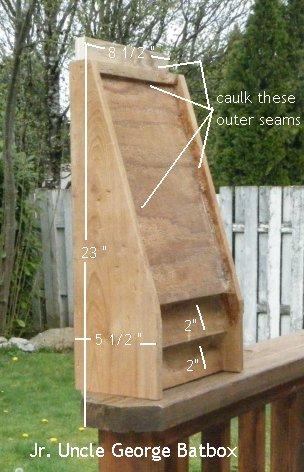
A well-designed, well-constructed, and properly located and maintained bat house may be used by these and other bat species if they live in or pass through your general area.
Bat houses can be painted with exterior grade, water-based paint or stain. In cool places, painting houses a dark color can absorb more heat, but in warmer places where bat houses receive full sun, a lighter shade can prevent overheating. Place bat houses where they will receive full sun for at least 6 to 10 hours. Bat colonies need warm places to raise their young, which decreases adult metabolic needs while roosting and allows for ideal conditions for pup (baby bat) growth. That being said, bat boxes can overheat in extreme conditions and overheating can lead to death. Be mindful of the placement of your bat houses, and use sun shades over them when necessary.
Build or buy a bat house that is at least 2 feet tall and 14 or more inches wide. Bigger is better. The house should have multiple chambers that are ¾ to 1 inch wide—a variety of sizes is good to provide for the needs of different species; however, using ¾ inch wide spacing can discourage the use of unwanted guests such as wasps. There also should be a roughened landing platform that extends 3 to 6 inches below the house.
The houses should be caulked during construction and preferably be screwed together. The idea is to create a tight microclimate inside the house capable of trapping both the heat captured during the day and the warmth generated by the bats. Air vents should be installed to ensure the bats do not overheat.
Place the house in full sun, preferably on its own pole; the next-best location is on the side of a building in full sun. Don't put it on a tree, as it will be in too much shade and too close to perch sites used by predators such as hawks and owls. Keep the area around the entrance clear of obstructions for at least 20 feet.
Bat houses should be inspected regularly to ensure they are still in good condition. This can include general maintenance such as re-caulking of seams and cleaning to remove uninvited guests like wasps.
Don't worry that adding a bat house to your property will encourage bats to move into your attic or wall space. If bats liked your attic or wall spaces, they would probably already be living there. Bat houses can provide protected habitats for bats and will be used either permanently in the summers or intermittently throughout the active season.
For an in-depth guide on bats and bat houses in our region, download Building Homes of Bats: A Guide for Bat Houses in British Columbia (PDF) (applies across Washington) from the Community Bat Programs of BC.
For further information on bat box designs and installation tips:
Preventing conflicts
For some people bats don't present a problem. For others, bats can be a worry, especially when they become unwanted guests in an attic, inside a wall of a home, or inside the home itself.
Unlike rodents, bats only have small teeth for eating insects, so they do not gnaw holes in walls, shred material for nests, chew electrical wiring, or cause structural damage to buildings. Damage caused by bats is usually minimal, but they can be noisy and alarming, and the smell of bats and their droppings can be offensive. It is possible to learn to coexist with bats, and to benefit from their presence.
Removing bats from your home
In spring and fall, migrating bats may temporarily roost outside on window screens, fence posts, piles of lumber, and other unlikely places. If a bat is seen roosting outside during daylight hours, leave it alone. It will probably be gone the following morning.
If a bat flies into your home it's probably a juvenile learning to fly, a solitary male following prey, or an adult that has been excluded from its roost . Bats often enter through an open door or window, or by coming down a chimney into an unused fireplace.
At nightfall (if you are sure the bat has not been in contact with humans or pets), turn off any lights in the room where the bat is confined, open all doors and windows that lead outside, and stand in the corner. This allows you to watch the bat while staying out of its way. (If you must move around the room, stay as near to the wall as possible.) Be prepared to watch the bat for up to 20 minutes. Normally, the bat will fly around the room to orient itself, and then leave.
If the bat seems to have disappeared but you didn't see it leave, it may be perched somewhere, such as behind a curtain, in hanging clothes, or in a houseplant. The bat will generally choose a high place to roost. Moving these things around with a broomstick may arouse the bat.
If the bat doesn't leave, it can be caught and released outdoors away from people and pets. Approach the bat slowly and place a container (small box, large glass, Tupperware container, coffee can) over it. Next, gently slide a piece of cereal box paper or cardboard underneath the bat (be gentle—bats are fragile animals). Using the paper as a cover, take the bat outside. The ideal release procedure is to place the container against a tree, slowly slide the paper away, and then remove the container. Releasing the bat against a tree allows the bat to rest safe from potential predators—like the neighbor's cat.
Watch this video from Idaho Fish and Game for tips on how to safely remove a bat from your home.
Note: State wildlife offices do not provide bat removal services, but you can find the names of individuals or companies that do under Nuisance Wildlife Control Operators or you can look up "Animal Control," "Wildlife Control," or "Pest Control" in you phone directory.
Excluding bats from buildings
The best way to get rid of bats is also the safest—both for the bats and the humans involved. This is to humanely exclude them. However, because old buildings offer many points of entry it may be impossible to completely exclude bats from them, or from those with shake or cedar shingle roofs that have no underlayment.
A wildlife damage control company experienced in excluding bats can be hired, or you can do the exclusion work yourself. In attics and areas where large numbers of bats have been roosting for years, it is safer for you to hire a professional to do the work, including the cleanup of accumulated droppings.
Note: Never trap flightless young or adult bats inside a structure; this is needlessly cruel to the bats inside and can create a serious odor problem.
Trapping and relocating bats is not recommended. Traps can be fatal to bats if left unattended and can quickly become overcrowded. In addition, bats have excellent homing instincts and, when released, they may simply return to the capture area. Yuma myotis bats released 240 miles from their roost have found their way back.
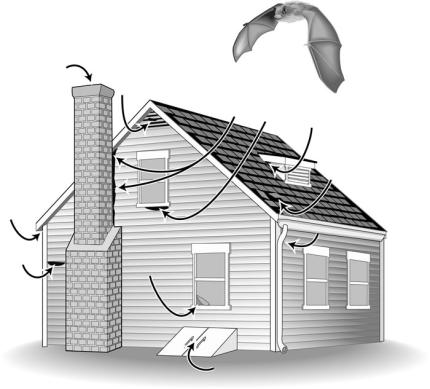
Common entry points used by bats:
- Down chimneys and where chimneys and other masonry meet the side of a house.
- Joints between window frames and house siding.
- Joints around large exterior beams.
- At building corners.
- Where pipes or wires penetrate the ceiling or walls in attics.
- Between porches or other additions and the main house.
- At roof edges, ridge caps, soffits, and fascia boards.
- Where walls meet the eaves at the gable of an attic.
Prior to excluding bats, consider partitioning bats off from the area where they are in conflict with humans, and allowing them to roost elsewhere in the structure. An effective partition can be made from construction grade plastic sheeting and wooden battens. Another consideration is to provide an alternate roost site, such as a properly designed and installed bat house mounted close to one of their exits. Install the bat house before excluding the bats as described below.
The following will work to exclude bats from most structures:
Option A – Build bats out: From mid-October to mid-March, when bats should still be hibernating, or after you have made sure no bats are roosting in the attic or other area, seal all potential entry holes (Fig. 5). Entering the attic during the day may reveal light shining through otherwise unnoticed cracks and holes. Insert pieces of fiberglass insulation or bits of stick in these holes to mark them for repair from the outside.
The advantage of caulk over foam is that it comes in a variety of colors and it is easier to apply. Before purchasing, check the label to make sure the caulk can be painted.
Insulation blown into wall spaces may be an effective barrier, but it must be done when bats are absent to avoid trapping them in the fill.
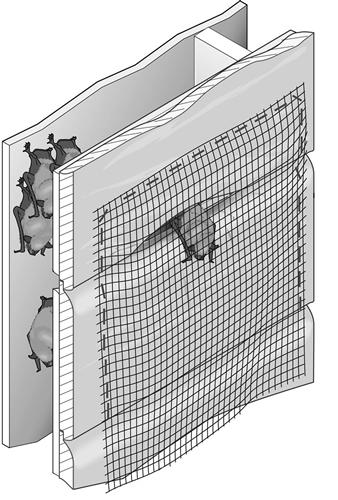
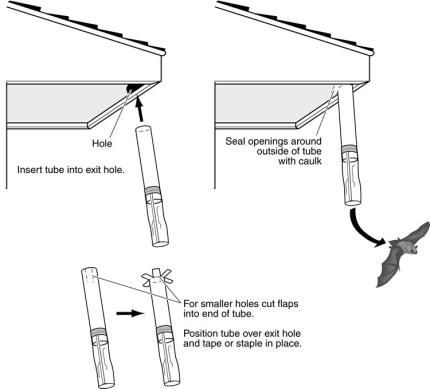
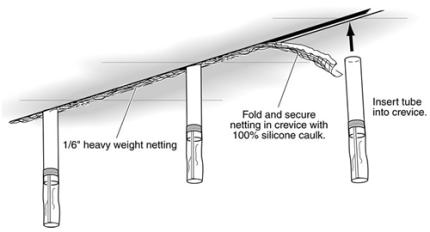
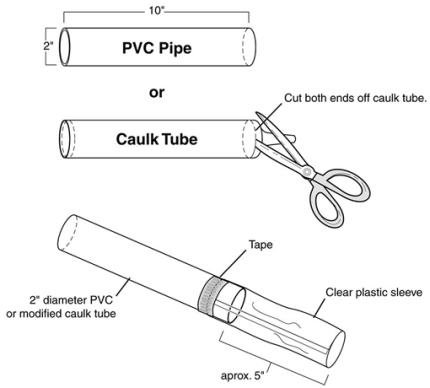
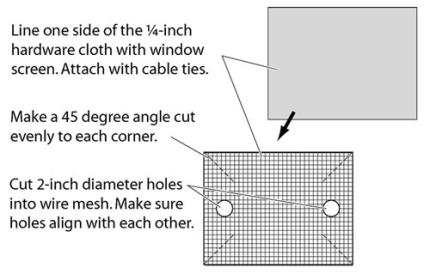
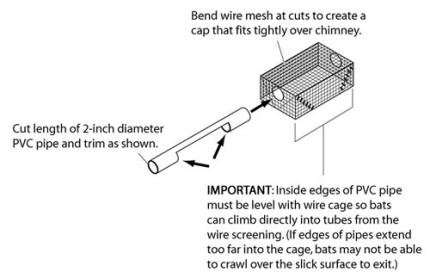
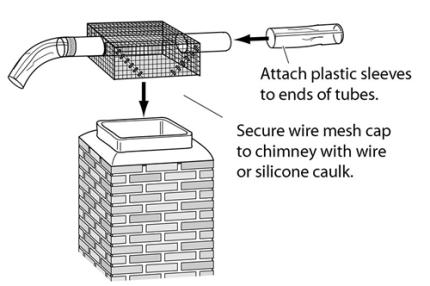
If bats are present, holes can also be blocked over a period of days early in the evening after the bats have left the structure to feed. Do this only from mid-August to mid-October (after the young bats have learned to fly and before cold weather arrives). Another window of opportunity occurs in early spring, before the birthing period in May.
For several days, bat counts should be made as holes are closed, leaving the main exit open. On the night of the final count after the bats have left, the main hole should be plugged to prevent their reentry (Fig. 6). The following evening, the plugging should be removed to allow any remaining bats to leave before the exit is sealed.
Option B – Harassment: If bats are present and have to be excluded, persuade them to move to one of their alternate roost sites by creating an undesirable atmosphere. The time to do this is from mid-August to mid-October, after the young bats have learned to fly and before cold weather arrives. Another window of opportunity occurs in early spring, before the birthing period in May.
Bats don't like to roost under bright, windy, or noisy conditions. Therefore, locate the area where bats are roosting and light the area with a bright light, such as a mechanic's drop-light or trouble light, located away from burnable objects. (Use a fluorescent light to save on electricity and keep the heat level down.) In addition, aim a fan and a loud radio at the bats. Begin the harassment process shortly before dark and keep it in place day and night.
Because bats may move to a dark, protected area, you may need to move the lights and other equipment, or install them in various areas. Putting up sheets of plastic to separate the bats from the rest of the area can be effective, but make sure you don't block the bats' exit or exits.
Commercially available ultrasonic devices may be effective if they are placed in a small, confined area with the roosting bats. Since bats can hear high frequency sounds, these devices, inaudible to humans, supposedly bombard the bat's range with jackhammer-like noise.
Naphthalene flakes or mothballs should not be used to exclude bats. These contain chemicals that can be toxic to humans and other life forms; poisoned bats may fall to the ground where they die slowly and are more likely to come into contact with children or pets.
Option C – Install exclusion devices: Again, from mid-August to mid-October (after the young bats have learned to fly and before cold weather arrives), or in early spring (before the birthing period in May), identify the exit(s) bats are using. Have friends or family members stationed at the corners of the structure after sunset on a warm calm night. They need to be far enough away to see as much of the structure as possible without having to turn their heads; it takes only a second for a bat to exit and take flight. Note which side of the structure bats are seen from. On subsequent nights, focus your attention there to locate the exit hole. Remember this hole can be as small as ½-inch.
Bats often defecate when exiting and reentering a building, so look closely for rice-sized black droppings clinging to the side of the structure. If droppings are observed, the exit hole will be directly above it. (To make sure droppings are new, remove the existing droppings or lay down newspaper over them to see if more droppings appear.) Bat body oils may also discolor a well-used opening.
Seal all entry holes but one using the methods described in Option A.
Exclude bats by covering the one existing entry hole with a device that allows bats to exit the structure, but prevents them from reentering. Install the exclusion devices during the day and leave them in place for five to seven days (longer during particularly cool or rainy weather).
When bats are using multiple openings to exit and enter, exclusion devices should be placed on each opening, unless you can be sure that all roosting areas used by the bats are connected. If all the roosting areas are connected, all but one or two exit holes can be sealed as described below. Place exclusion devices over the one or two remaining exit holes.
However, if the colony contains a hundred bats or more, which is common, leaving only one exit point can create a "bat log jam." In these cases, some bats might start looking for alternative ways out of the roost area, leading to bats finding their way into human-occupied areas. So, always watch to make sure bats are able to exit freely. If they do not appear to be exiting, or appear to be having trouble doing so, open additional exits.
If the exclusion process was successful, immediately seal up the exits to prevent bats from reentering. If necessary, install a chimney cover, available from home improvement centers, or make your own.
Bats roosting above porches and other areas
Bats temporarily roost above porches or under overhangs at night to eat large prey, digest, rest, and socialize. In such cases, they may frighten humans, or their droppings may accumulate. Nontoxic aerosol sprays, designed to repel dogs and cats, can prevent bats from night-roosting in these areas.
The spray is applied by day when bats are not present, and is reported to be effective for several months. However, aerosol repellents are not an adequate substitute for excluding bats that are using the area as a day roost, and should never be applied when bats are in a roost.
Mylar balloons or strips of aluminum foil hung from the porch ceiling and allowed to move in the breeze may also discourage bats from roosting in that area.
Public health concerns
Large accumulations of bat droppings may harbor histoplasmosis fungi spores, which when inhaled can result in a lung infection referred to as "histo." No histo cases have been reported in Washington, but precautions should be followed when cleaning or removing large accumulations of bat droppings. Call your local health department for recommendations.
Rabies
People are more often concerned about bats because of rabies, a virus that affects the nervous system of all mammals, including humans.
Rabies is spread when the saliva of an infected animal enters another body through a bite or scratch, or makes contact with their eyes, nose, mouth, or a break in the skin. There is little risk of contracting rabies from a bat as long as you exercise caution. People cannot get rabies from touching bat droppings, blood or urine, or fur.
Five to 10% of sick, injured, or dead bats tested by the Washington State Department of Health (WDH) have rabies; however, WDH estimates that probably less than 1% of the native wild bat population has rabies.
If a bat does contract rabies, it is unlikely to be a threat to humans as long as simple precautions are followed. Most bats infected with rabies become paralyzed and fall to the ground. (Note: Young bats also fall to the ground when learning to fly. They may also have hit a window and been stunned, or simply be cold and unable to fly.) This means a person may contract rabies from a bat only if they pick up a sick bat, which then bites the person in self-defense. Thus, if you do not handle bats, your odds of contracting rabies are extremely small.
If you think you have been bitten, scratched, or exposed to rabies via a bat:
- Wash any wound or other area that came into contact with the bat thoroughly with soap and water.
- Capture or isolate the bat, if you can, without risking further contact. The captured bat will be sent to a laboratory for rabies testing.
- Call your doctor or local health department. An evaluation of the potential of rabies exposure and the need for follow-up treatment will be done. Arrangements to have the bat tested for rabies, if necessary, will also be made.
People usually know when a bat has bitten them. However, because bats have small teeth and claws, the marks may be difficult to see. Contact your local health department or your doctor in the following situations, even in the absence of an obvious bite or scratch. In such cases, the bat should be captured for testing:
- A bat is found in a room with a sleeping person.
- A bat is found in a room with an unattended child.
- A bat is found near a child outside.
- A bat is found in a room with a person under the influence of alcohol or drugs, or who has another sensory or mental impairment.
Rabies and your pets
Once dogs presented the major domestic risk of rabies, but now cats do. Routine rabies vaccination is not as widely practiced with our domestic cats as with dogs. Yet cats often play or hunt in natural areas.
All cats should be vaccinated for rabies, even indoor cats. The National Association of State Public Health Veterinarians publishes the Compendium of Animal Rabies Control yearly. These guidelines are clear: An unvaccinated animal that comes in contact with a potentially rabid animal (bats in Washington) that cannot be tested should (1) be euthanized; or (2) be held in strict quarantine for six months. Few people are willing to do either.
The message for everyone is: vaccinate your pets! Dogs require vaccination against several diseases. Puppies begin their series of vaccinations at six to eight weeks of age, and annual boosters are necessary to maintain immunity.
Legal status
Many Washington bats are currently being studied and may be recommended for protection under the Endangered Species Act. For current legal status and other information, contact your local wildlife office.
All species of bats are classified as protected wildlife and cannot be hunted, trapped, or killed (WAC 220-200-100). The Department of Fish and Wildlife makes exceptions for bats found in or immediately adjacent to a dwelling or other occupied building. In such cases, these animals may legally be removed and no permit is necessary (WAC 220-200-100).
Threats to bats
Across the United States, bats face many threats that put them at severe risk of population decline. These threats include a devastating disease called white-nose syndrome, wind energy, habitat loss, and climate change. To learn more about the threats bats face from climate change, habitat loss, persecution, and wind turbines, visit Bat Conservation Internationals page.
White-nose syndrome
White-nose syndrome has killed millions of bats in eastern North America since 2006. Washington's first case of the disease was confirmed in March 2016 near North Bend in King County. White-nose syndrome is a disease caused by the fungus Pseudogymnoascus destructans. The disease is estimated to have killed millions of bats in eastern North America since 2006 and can kill up to 100% of bats in a colony during hibernation. Watch the video about white-nose syndrome, a fungal disease that is often fatal to hibernating bats. This disease does not affect humans, livestock, or other wildlife.
Visit the white-nose syndrome webpage for more information.
Download the white-nose syndrome fact sheet (PDF)
Keep cats indoors
Domestic cats are talented predators of bats. Because of their efficient hunting tactics, house cats kill millions of birds, reptiles, amphibians, and small mammals which impacts local wildlife populations dramatically. Additionally, cat feces can spread disease to wildlife. Instead of letting your cats outside, build them a contained outdoor catio or provide enrichment inside. Keeping cats indoors keeps both your cats and local wildlife safer.
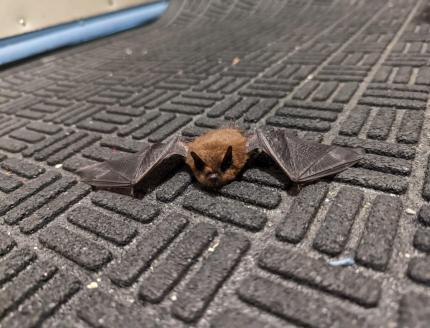
Keep the lights off
Artificial Light At Night (ALAN) is the light produced by our streetlights, billboards, buildings and more. These artificial light sources disrupt the natural patterns of wildlife, especially in our cities and towns. It can effect when wildlife are active, where they find food sources, and how they hunt. Keeping outdoor lights off at night when not in use, can help wildlife use their habitats more naturally. If you can't turn lights off, consider using a yellow or red light, or covering lights so they point at the ground without shining up into the skies as much.
Habitat Loss
With human development, bat habitat is disappearing everyday and you can help change this! Create and protect bat habitat where you live, work, and play.
Food: While bat diets vary greatly around the world, all Washington bats eat insects.
Plant a bat garden! You can support their food supply by planting native plants that support night flying insects. Flowers with white and light-colored blooms, or flowers who produce fragrance attract insects that bats eat such as moths, beetles, flies, gnats, mosquitos, and more.
Water: Keep existing water sources accessible to bats means keeping invasive plants from filling ponds and streams with vegetation that would limit a bat’s ability to reach the surface. Turn off artificial lights at night that shine over water, disrupting insect activity and bat’s echolocation.
You can also add a water source for bats! Bats drink “on the wing” and rarely land to drink. This means they need large freshwater sources that are free of pollution to give them the space to swoop to reach water. Water troughs, filled high and refreshed often to keep them clean, and ponds can provide water for bats.
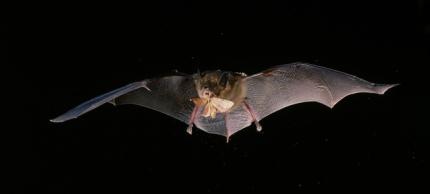
Shelter: Bats use a variety of shelters (called roosts) throughout the year. They use a variety of habitats to roost such as caves, mines, bridges, bat houses, crevices and cavities in rocks and trees as well as bark, branches, and foliage. You can help by protecting the trees and natural bat habitat around you.
Bat houses are a great way to help replace bat habitat lost to human development. They can provide shelter (called roosts) for maternity colonies, as well as shelter for foraging, migrating, and dispersing bats. Additionally, bat houses provide us with an opportunity to observe bats and the chance to educate friends on how they can support their neighborhood bats.
Pollution and Pesticides
Bats rely on water sources for drinking and for the insects that are attracted to the water. Human-caused pollution can damage water sources, making bats sick and insects scarce. Dispose of chemicals at hazardous waste disposal sites instead of in drains, garbage, or by dumping. These avenues lead to chemicals leaching into soil and makings its way to natural water sources.
Reduce or eliminate your use of toxic pesticides. Using pesticides not only affects insects but can also harm predators like bats and birds who eat insects as a main staple of their diets. Avoiding harmful pesticides, even switching to non-toxic pesticide alternatives, supports native insects and keeps bats healthy.
Report a colony or found bat
Report sick, injured, or dead bats online. Please also report groups of bats. These reports provide valuable information to track bat populations in Washington.
COVID-19 and bats
Bats are one of the most beneficial animals to humans, but they may be facing yet another threat in addition to white-nose syndrome. At this time, the potential transmission from humans with the COVID-19 virus to North American bats remains unknown. Researchers are investigating the susceptibility of North American bats to the COVID-19 virus. It’s important to remember that people cannot get COVID-19 from bats.
To learn more about bats and coronaviruses, visit Bat Conservation International's, Bats and COVID-19 Updates webpage.
Additional information
Ingles, L. G. Mammals of the Pacific States. Stanford, CA: Stanford University Press, 1965.
Link, Russell. Landscaping for Wildlife in the Pacific Northwest. Seattle: University of Washington Press and the Washington Department of Fish and Wildlife, 1999.
Maser, Chris. Mammals of the Pacific Northwest: From the Coast to the High Cascades. Corvalis: Oregon State University Press, 1998.
Nagorsen, David W., and Mark R. Brigham. Bats of British Columbia. Vancouver, BC: University of British Columbia Press, 1993.
Tuttle, Merlin D., and Donna L. Hensley. The Bat House Builder's Book. Austin, TX: Bat Conservation International, 1995; University of Texas Press, 2001.